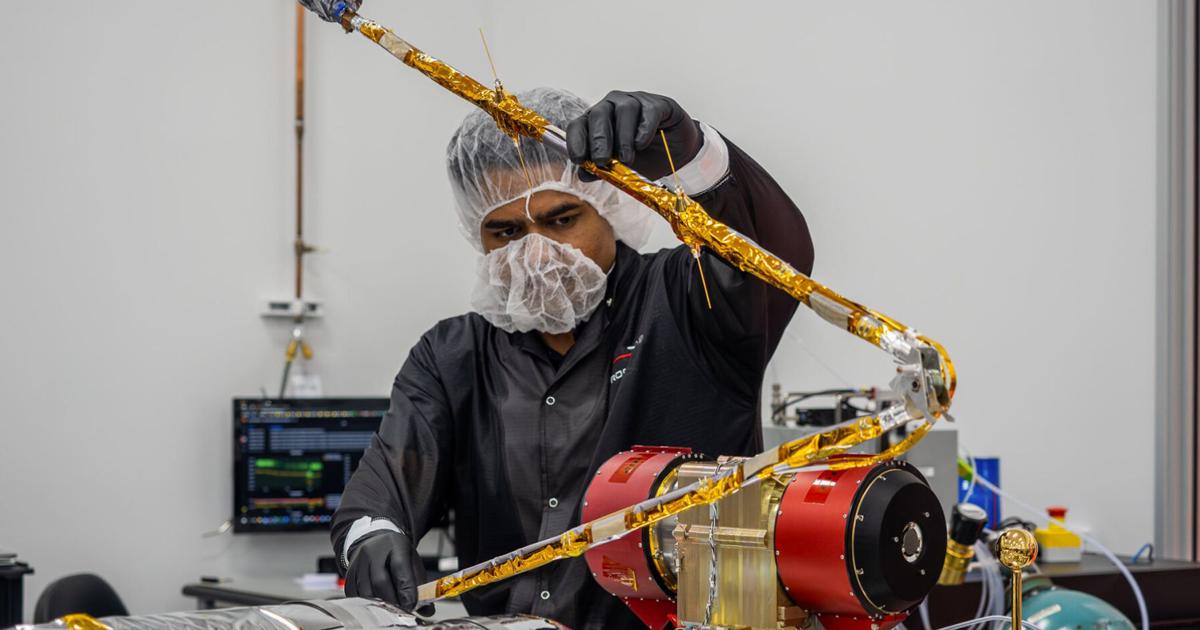ESCAPADE, the first ever UC Berkeley-led planetary mission, is set to launch in early November, with scientists expecting to receive the first data from space within a few months of the launch.
Short for Escape and Plasma Acceleration and Dynamics Explorers, ESCAPADE is a twin-spacecraft Mars orbiter mission studying how space weather and solar wind interact with the upper atmosphere of the planet, according to Rob Lillis, associate director for planetary sciences at UC Berkeley’s Space Sciences Lab, or SSL, and principal investigator for the mission.
ESCAPADE also aims to analyze how these interactions contribute to atmospheric escape from Mars and climate evolution over Martian history.
“Understanding the space weather environment near Mars is also of practical importance as we plan to send humans to Mars,” Lillis said.
The mission involves placing two satellites — named “Blue” and “Gold” after campus’s signature colors — into orbit around Mars, according to UC Berkeley News. NASA said this is the first multi-spacecraft orbital mission to Mars.
UC Berkeley is the lead institution for the mission, providing project leadership, management and systems engineering, according to Lillis. He added that campus is also providing two of the scientific instruments on each spacecraft.
“One is an electrostatic analyzer that measures ions,” Lillis said. “The other is a different kind of electrostatic analyzer that measures electrons and the flow of ions and electrons in terms of their energy and directions.”
Phyllis Whittlesey, associate director of solar and heliophysics at the SSL and instrument lead for the electron electrostatic analyzer, said the instrument provides measurements for the overall density and speed of the particles, individually and in bulk.
The ESCAPADE mission was selected as part of NASA’s Small Innovative Missions for Planetary Exploration program, or SIMPLEx. The idea behind the program, according to Lillis, was to see if planetary missions could be done at a much lower cost if NASA were “willing to accept a slightly higher risk.”
The two spacecraft involved in the mission were delivered to Cape Canaveral for just under $50 million, Lillis said.
“This is literally 1/10 of what it would usually cost,” Lillis said. “It’s because we embraced a faster approach, (have) less oversight and paperwork from NASA (and) we engaged a commercial company called Rocket Lab … to build the spacecraft for us.”
Rocket Lab operates on a firm, fixed-price contract approach, Lillis said. In the past, according to Lillis, whatever a company spends, they charge NASA. Companies such as Rocket Lab “promis(e) a price, and they deliver,” he said, making them more cost-effective for mission operations.
While the satellites are set to launch this fall, the “actual science mission” won’t officially start until spring 2028, Lillis said. He added that between now and then, the satellites will spend time orbiting Earth, traveling through interplanetary space and being adjusted by campus scientists.
“What ESCAPADE is trying to do in the broader context of NASA science is really unprecedented, not just from a science perspective, but from a technical perspective,” Whittlesey said. “It is so exciting that we get an opportunity as a university to run a multi-spacecraft mission to Mars.”

